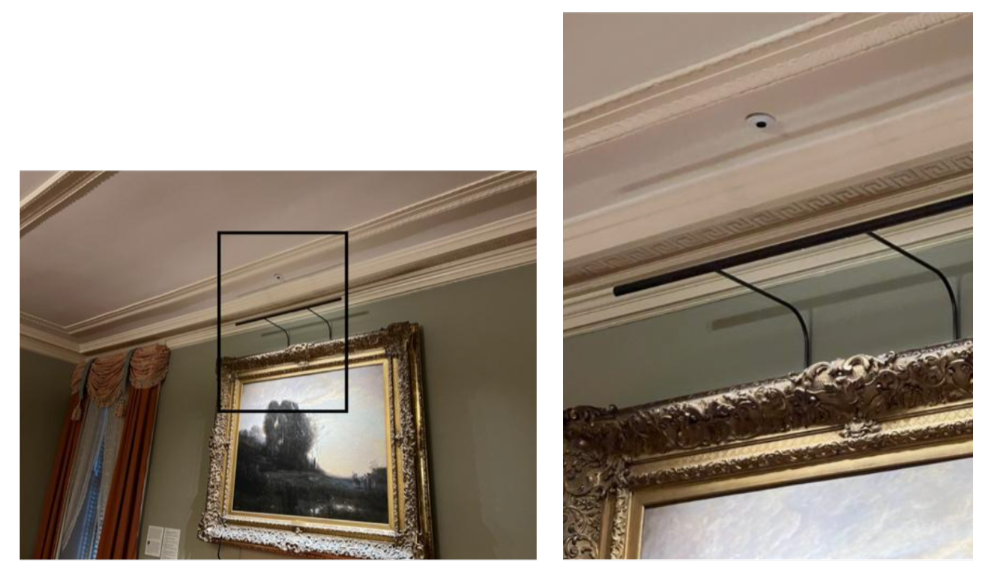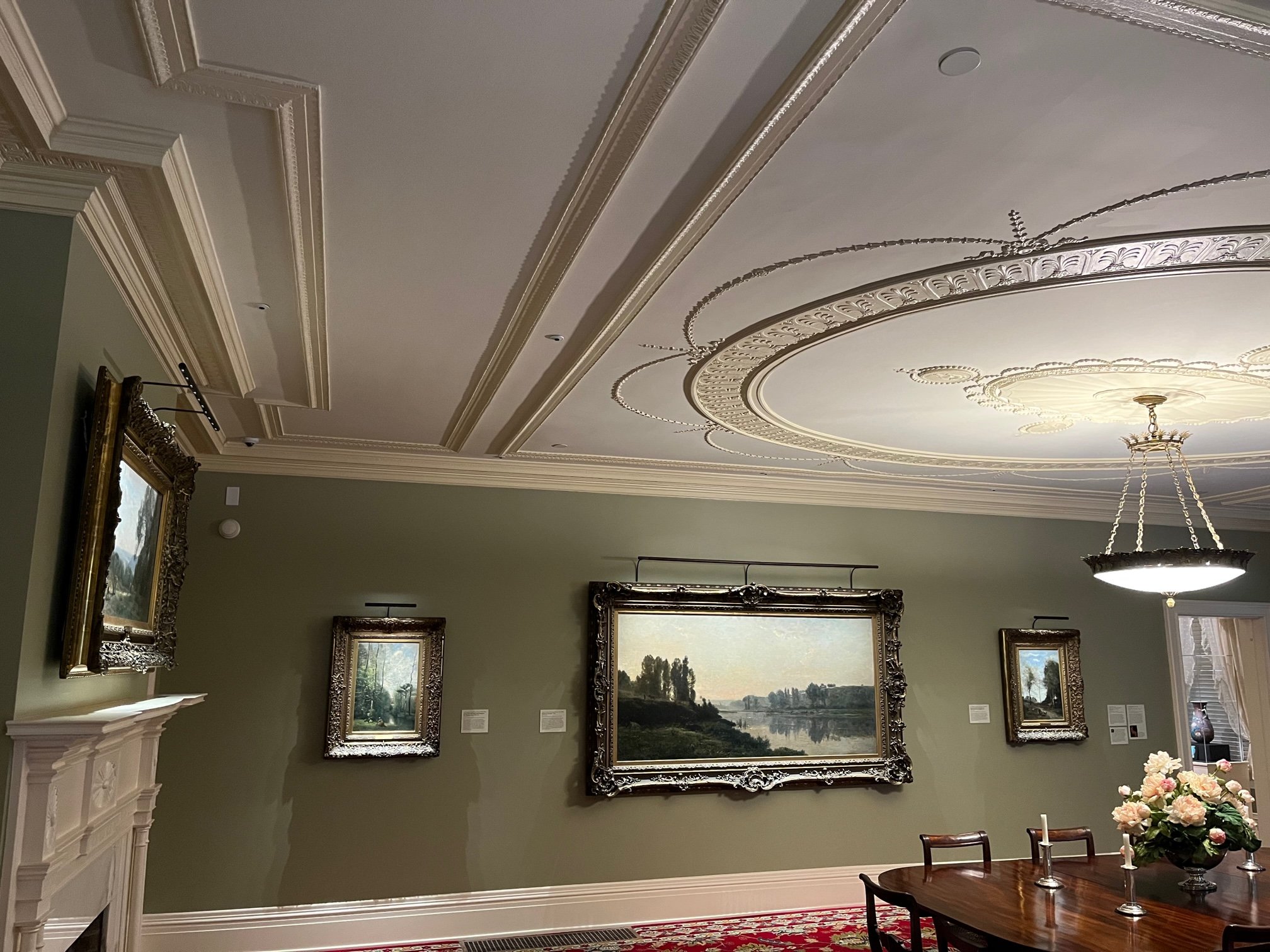The Taft Museum of Art, a gem of a museum in Cincinnati, recently undertook a major renovation project that included their period rooms. The museum consists of a beautiful historic house (1830), once owned by the Taft family, half-brother to President Taft, and other notable people, and a more modern wing. The entire museum underwent a major renovation, including a new Security Command Center and other upgrades as well as an Art Sentry system installation.
The Art Sentry system was designed by Steve Keller and Associates, well-known museum security consultant. Because the major pieces in the collection, including a Rembrandt, reside in the historic mansion, the museum management knew they needed object protection. The issue was whether such a system would damage the historic look and feel of the beautiful period room galleries. Keller promised them it could be done and that his team could design a system that improved on the then-current condition with small but visible cameras on the ceiling.
Art Sentry spoke with Keller recently to see if the museum was pleased with the appearance and performance of the system. “They were delighted,” Keller said. “Every accessioned item in the historic mansion is protected by the Art Sentry system and the installation is not just good, it is outstanding” he said.

“It doesn’t get any better than this. The cameras are fully integrated with the ceiling,”, Keller said. “You guys did a great job.”
Gone are the highly visible cameras on the ceilings. The new miniature cameras recess into the ceiling and every work of art is alarmed and visible in the command center.
Steve Keller has specified the Art Sentry system for dozens of his clients. But there has always been a question as to whether a system can be designed and installed with minimal or no damage to historic building fabric (drilling of holes and the visual appearance of the cameras on the ceiling). “This project proves that house museums can rest easy and not worry about the impact the system will have on its building” Keller noted. “It helped that the building was under renovation and that ceilings were being restored, but this project serves as an example of what can be done.”
Of particular concern were the eight large murals by African American artist Robert S. Duncanson. Because they could not be removed for the project, there was concern for their safety throughout the project. The murals, painted in the 1830s, and the house, were designated as National Historic Landmarks in 1976.
Among the art protected by Art Sentry in this museum gem are works by Rembrandt, Goya, Gainsborough, Turner, Ingres, Whistler, and Sargent.
“The Art Sentry System provides complete protection of our priceless collection without negatively impacting the visitors experience or the fabric of the historic property.”
James MacSkimming
Director of Security, Risk & Safety
Taft Museum of Art
Additional Resource:
We also have a resource with insights about museum grants. Explore the growing collection.




